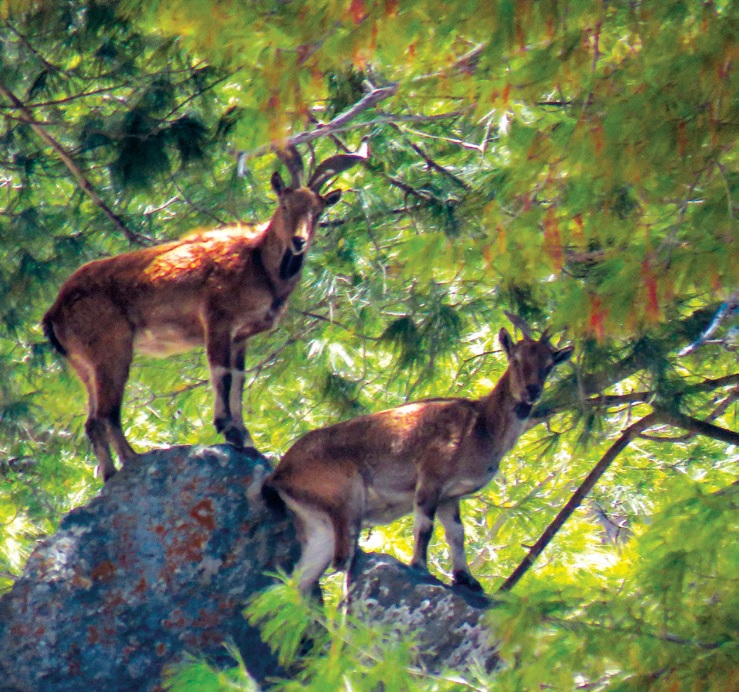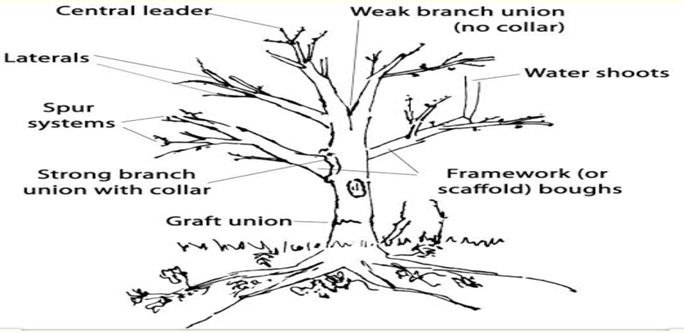The tourism industry in Jammu and Kashmir is contributing significantly to the overall growth of the Jammu and Kashmir Union Territory’s economy. A considerable number of people, especially the younger generation, have found employment in the industry.
Under the border tourism initiative several new locations were brought under the tourism map by the administration. One such unexplored and unspoiled place is Kazinag National Park in the Baramulla district of north Kashmir, which is home to the stunning and endangered markhor.
According to wildlife officials, the markhor and other species including musk deer have increased since the area was designated a national park.
Markhor,a national animal of Pakistan, can be found on both sides of the Line of Control.
With the assistance of Wildlife Trust of India, two wildlife sanctuaries—Limber and Lachipora—were combined with the Naganari conservation reserve in 2007, resulting in the creation of the park.
Spread over more than 89 square kilometers, Kazinag National Park has the potential to grow into one of the nation’s largest parks and a tourism spot.
Mohammad Maqbool Baba, Wildlife Warden north Kashmir told Rising Kashmir that Kazinag National Park is one of the finest parks comprising two sanctuaries and a conservation area and is home to Markhor and about 20 species of mammals, 120 species of birds and 17 species of butterflies, besides numerous species of medicinal plants.
“This is one of the richest parks in the state. The animal lovers can have group sightings of the markhor, wild animals and birds here,” Baba added.
Sameer Khazir, Assistant Manager at Wildlife Trust of India told Rising Kashmir that a lot of people don’t know about the national park and for that administration, locals, tourism department and other departments will have to collaborate to make this place famous.
He said the best time to watch markhor is between October to April when the animal comes down from higher altitude areas.
It was in early 2000 that the J&K Wildlife department proposed Kazinag Biosphere Reserve project but Wildlife Trust of India named the project as Kazinag National Park.
Dr. Tanushree Srivastava, Manager and Head, Western Himalaya Mountain Ungulate Project, J&K at Wildlife Trust of India told Rising Kashmir that there has been an upward trend not only of markhor but tragapons, gorals, musk deer and other birds.
“This national park is the only place in the country where markhor and tragapons are found in high numbers, so, it needs special attention, she said, adding “We have started making people aware about the park. Earlier, villagers used to go for community hunting of animals in winters, which has now stopped.”
Dr. Tanushree said that in a census held in 2017-18 by Wildlife Trust of India in collaboration with the Department of Wildlife Protection, J&K recorded at least 180 Markhors in Kazinag National Park.
“The sustained efforts from Wildlife Trust of India in collaboration with the Department of Wildlife made it possible. We are continuously spreading awareness among the locals and have even engaged communities ‘Markhor watchers’ in the conservation of the Markhor and wildlife in the area,” she added.
Dr. Tanushree further said that they are planning to establish ecotourism ventures like homestays in Kazinag to bring it on a tourism map.
Farhan Ahmad Lone, a resident of Babagail area said that the UT administration should show special interest towards the park and boosting tourism in the area which will not only increase the footfall of tourists in the area but also strengthen the locals economically.
“The picturesque villages of Chahal, Limber, Babagail and Budraali provide a fascinating view of the area. This is the unexplored spot for tourists yet. The Mithwaen Waterfalls, Ras Gali trekking route, Naegi, and Vijji top are the few spots for tourists here in this area,” he added.
The locals told Rising Kashmir that macadamisation and widening of roads is important as it will connect the Baramulla town with the Kazinag National Park.
“Unfortunately, only a few know about the national park in Baramulla district. We don’t have signboards, the mobile network is weak, the roads are not macadamised, administration didn’t pay much attention towards it. It is high time to bring this area on a tourism map and help the locals in employment generation,” Farhan added.
A Wildlife official said that Kazinag is dominated by coniferous forests with deodar at lower altitudes, fir and spruce at middle to upper elevations and kail is widely distributed from lower to upper elevations.
Around 20 species of mammals, including some rare, threatened, endangered are found within the limits of Kazinag National park.
“Key animal species sighted are Markhor, Himaliyan Musk Deer , Himalayan Brown Bear, Himalayan black bear and common leopard, Yellow Throated Martin , Himaliyan Marmot, Small Kashmir Flying Squirrel,” he said.
He further said that the Park is home to about 120 Species of birds representing about 36 families which include Golden Eagle, Monal Pheasant , Koklas Pheasant , Sparrow Hawk, Snow Pigeon, Kashmir Red breasted Flycatcher, etc.
“It is also home to 17 Species of Butterflies which include Regal Apollo, Common Blue Apollo, Common red Apollo and Brown Argus,” the official added.








